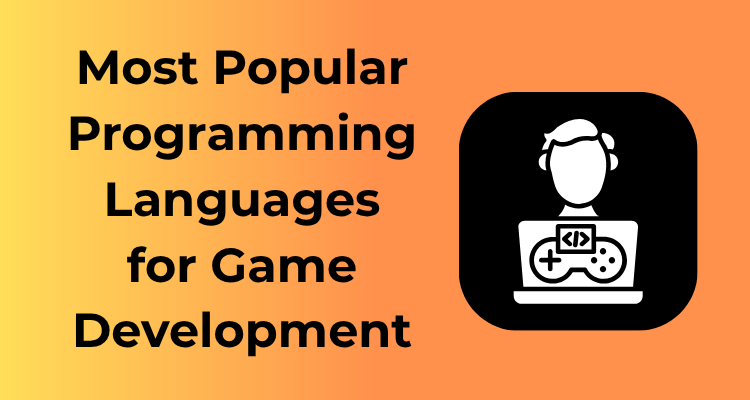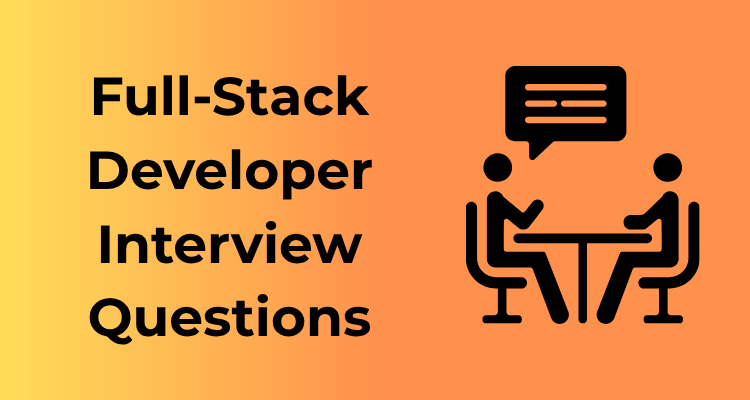Before diving into the bustling world of freelancing, let’s talk about one of the most crucial steps: knowing where you fit in the market. It’s like showing up to a party—before you mingle, you need to know how to introduce yourself, right? The same applies to freelancing in the tech space. Let’s break it down together.
Building a Portfolio That Speaks for Itself
Let’s get one thing straight: in the world of freelancing, your portfolio is your golden ticket. It’s like your digital handshake; it tells potential clients, “Hi, I’m awesome at what I do, and here’s the proof!” So, if you’re starting your freelance tech journey, or even refreshing an existing career, putting effort into a stellar portfolio is non-negotiable. Don’t worry—this can also be fun! Let’s break it down step by step.
1. Showcase the Right Work
Your portfolio isn’t just a collection of everything you’ve ever worked on—it’s strategically curated to attract your dream clients. Think about the type of freelance work you want to land. Are you a front-end developer? Highlight sleek, responsive websites. An app designer? Show functional and user-centric examples. Remember, tailor your portfolio to the jobs you want.
But what if you’re new and don’t have client work yet? No problem! Create personal projects, redesign an existing product, or participate in hackathons. Clients care more about your skills than your resume, so focus on demonstrating your abilities and creativity.
2. Make it Visually Appealing
Here’s a small, yet important tip: how you present your work matters almost as much as the work itself. Use clean, professional layouts and avoid overcrowding your portfolio. Make it easy to navigate and, most importantly, ensure that it’s optimized for mobile viewing. A cluttered or outdated design can leave the wrong first impression.
Tools like Behance, Dribbble, or even creating your own personal website with platforms like WordPress or Squarespace can help make your portfolio stand out.
3. Tell the Story Behind the Work
Don’t just slap screenshots or links to projects on a webpage; give clients some context! Briefly describe the problem, your process, and the solution you delivered. Did you create a dynamic website in record time? Improve app performance by 40%? Build a tool that saved a team hours every week? Share these details to show not only what you did, but the impact of your work.
4. Show Versatility (But Stay Focused)
It’s important to strike a balance between demonstrating versatility and staying focused on your niche. If you’re an expert in database management but also dabble in UI design, feel free to show a small variety. However, avoid being a jack-of-all-trades without mastering one; clients typically hire specialists for specific needs.
5. Incorporate Testimonials or References
If you’ve had clients or collaborators rave about your work, don’t keep it a secret! Add short, genuine testimonials to your portfolio. A glowing endorsement can tip the scales in your favor when a client is deciding between you and another freelancer.
6. Keep It Updated
Your portfolio isn’t a “set it and forget it” thing. Regularly update it with new projects, skills, or tools you’ve mastered. Even if a piece of work holds sentimental value, if it no longer represents your best skills, rotate it out. Remember, your portfolio is a living document that should always reflect your current expertise.
Pinpointing Job Boards That Match Your Expertise
Let’s face it, scouring the internet for the perfect freelance tech job can feel a bit like finding a needle in a haystack. But here’s the good news: there are job boards tailored specifically for tech freelancers like you! The key is knowing where to look and how to focus your energy.
Why Focused Job Boards Matter
Not all job boards are created equal, and if you’ve ever wasted hours sifting through postings that weren’t even remotely close to what you’re skilled at, you know this all too well. Specialized job boards help you cut through the noise. They’re designed with a specific industry, skill set, or role in mind, which means you’re more likely to find gigs that align with your expertise and interests.
For example, if you’re a seasoned web developer, you don’t want to scroll through listings for graphic design or content writing jobs. Focused job boards not only save you time but also connect you directly with businesses seeking your specific skills.
Top Job Boards for Tech Freelancers
Here’s a quick roundup of some of the best job boards that cater to tech-savvy freelancers like you:
- Toptal: Known for its rigorous screening process, Toptal connects top-tier freelance developers, designers, and other tech pros with reputable clients. If you’ve got the chops, this one’s a goldmine.
- Upwork: A classic in the freelance world, Upwork offers gigs across a range of tech skills. Create a strong profile, and make sure to apply to jobs that fit your expertise well.
- We Work Remotely: This job board specializes in remote jobs, many of which are in tech fields like web development, software engineering, and product management.
- AngelList: Perfect if you’re interested in working with startups, AngelList is a hub for freelance and full-time opportunities in tech, catering to both junior and advanced roles.
- GitHub Jobs: GitHub isn’t just a place to store your code—it’s also a fantastic resource for finding work, especially if you’re a developer.
How to Make These Job Boards Work For You
OK, so you’ve got the list of job boards, but how do you stand out among the zillions of other tech freelancers? Let’s break it down:
- Tailor Your Profile: Many job boards allow you to create a profile that showcases your skills, experience, and portfolio. Invest time in making this shine—it’s often the first impression clients will have of you.
- Set Targeted Alerts: Many platforms let you create alerts for specific job types. Use these wisely; they’ll save you from checking in constantly and ensure you don’t miss great opportunities.
- Apply Strategically: Don’t just send a generic proposal and hope for the best. Customize your responses to show you’ve read the job description and are genuinely interested.
Networking Effectively in the Digital Age
Let’s face it—networking in 2023 isn’t about stiff handshakes in crowded conference halls anymore. The digital age has completely transformed how professionals connect, and that’s great news for freelancers like you! Whether you’re just getting started or hoping to level up, mastering the art of online networking can open a treasure trove of opportunities in the tech freelancing world.
Why Networking Still Matters
In a world run by algorithms, personal connections are still irreplaceable. Even in freelance tech gigs, knowing the right people can put you on the fast track to landing projects you didn’t even know existed. That recommendation from someone in your network? It can be worth more than a sterling portfolio.
Start with Genuine Conversations
Networking doesn’t mean spamming every LinkedIn post with, “Looking for a job!” It means building professional relationships that are based on genuine interest and collaboration. When you interact online, be curious and authentic.
- Comment thoughtfully on posts in your industry.
- Congratulate connections on their successes.
- Offer solutions or advice if someone’s asking for help with something in your area of expertise.
Win hearts before you win projects!
LinkedIn: Your Best Wingman
Among all platforms, LinkedIn is a goldmine for tech freelancers. Here’s how to make the most of it:
- Optimize Your Profile: Your LinkedIn page is your virtual handshake. Make sure it showcases your skills, has recommendations from past clients, and reflects your personality.
- Join Groups: Find LinkedIn groups specific to your field—whether it’s UX design, Python programming, or AI development. Participate in discussions; this will establish you as an expert in your niche.
- Connect with Intent: When sending connection requests, always add a personal note. Let people know why you’d like to connect. Never seem like a bot!
Leverage Other Social Platforms
Yes, you can absolutely network beyond LinkedIn! Social media is a hotbed of communities where freelancers and recruiters mingle.
- Twitter: Follow industry leaders, share thoughts on tech trends, and engage with conversations using hashtags like #freelancejobs or #developerslife.
- GitHub: For developers and programmers, contributing to open-source projects can get you noticed by peers and, eventually, clients.
- Discord and Slack Communities: Many niche communities have spaces for freelancers to collaborate and find gigs. Find the ones where your expertise fits!
Don’t Ghost Your Network
Too often, freelancers focus on networking only when they’re on the lookout for new gigs. Big mistake! Keep nurturing those connections, even if you’re fully booked.
Drop a “just checking in” message to past clients. Share a useful article or a quick industry update with a colleague. Continue engaging in groups where you’ve actively participated. Don’t be “that person” who only shows up when they need something!
Attend Digital Events
With so many conferences, panels, and workshops going virtual, attending them is easier than ever. Plus, many of them have networking components—chatrooms, breakout sessions, or post-event Slack groups.
This not only boosts your presence but also keeps you updated on industry trends.
Setting a Pricing Strategy That Reflects Your Value
Ah, pricing—one of the most daunting steps for any freelancer, especially when you’re just starting out in the tech world. How much is too much? How little is too little? Let’s break this down into clear and manageable steps to help you establish a pricing strategy that truly reflects your worth.
Know Your Market
The first thing to do is research. Hop onto platforms like Upwork, Fiverr, or niche-specific tech boards and take a peek at what others with similar skills are charging. Are you a web developer? Check the average rates for small projects versus larger-scale ones. If you’re a UX designer, look at pricing based on the complexity of the deliverables. Understanding the going rate gives you a solid foundation to position yourself competitively.
Factor in Your Skill Set and Experience
Here’s the thing: your pricing isn’t just about the market. It’s also about the value you bring to the table. Got years of experience or advanced certifications? Pricing a little higher is totally justified. If you’re newer but have a unique skill set (like proficiency in a rare development framework), highlight it—and charge accordingly. Confidence in your abilities goes a long way!
Time to Choose: Hourly or Project-Based?
One of the eternal freelancer debates: should you price by the hour or per project? The answer often depends on the type of job.
- Hourly rates: These work well for short tasks or ongoing gigs where requirements may evolve. Clients like the transparency, and you can track your time accurately.
- Project-based pricing: A great option for defined deliverables with clear boundaries. While it can feel riskier (what if it takes longer than you thought?), it also has the potential to pay better if you’re efficient and focused.
Not sure which approach to take? Start with hourly for smaller projects. Once you’re confident in assessing timelines, transition to project-based for bigger gigs!
Don’t Forget Overhead and Extras
Remember, freelancing means you’re running your own mini business. That comes with costs like software subscriptions, taxes, tech tools, and even health insurance (depending on where you live). Your pricing needs to account for these expenses. And don’t forget to include a buffer for revisions—many projects will require them!
Communicate Value, Not Just Price
It’s tempting to think clients will always go for the lowest bidder, but quality clients seek value over cost. Instead of just stating your price, articulate what that price includes. Will you deliver wireframes within 48 hours? Offer two rounds of revisions at no extra charge? Create clean, reusable code with thorough commenting? Clients appreciate knowing they’re getting more than just a service—they’re getting expertise.
Be Ready to Adjust Over Time
Pricing is not static. As you gain experience, tackle more complex projects, and build a reputation, don’t hesitate to revisit your rates. Start out modestly if you must, but make sure you’re regularly stepping back to evaluate if your prices still align with the value you’re delivering. It’s okay to level up—it’s all part of the freelance journey!
Managing Time and Client Expectations Like a Pro
When it comes to freelancing in tech, time management and setting clear client expectations are the unsung heroes of your success. Whether you’re coding the next big app or designing sleek UX/UI interfaces, how you juggle your time and communicate with your clients can make or break your reputation. So, let’s dig into some practical tips to help you nail both like a seasoned pro.
Time Is Money: Mastering the Clock
If there’s one truth about freelancing, it’s this: you’re not just selling your skill—you’re selling your time. Here’s how to make every second count:
- Set Clear Priorities: Start your day with a to-do list, emphasizing the most critical tasks. Apps like Trello or Notion can help you keep everything visual and organized.
- Use Time Tracking Tools: Want to know where your hours disappear? Use tools like Toggl or Clockify to track your working hours. It’s a game-changer for productivity and for accurately billing clients, too.
- Create a Work Schedule That Works: Establish a routine that suits your energy levels. Are you a morning person or a night owl? Plan your “deep work” sessions accordingly.
- Avoid Multitasking: It’s tempting to juggle multiple projects at once, but research shows multitasking reduces efficiency. Focus on one task before moving on to the next.
Sticking to these practices will not only save you stress but also allow you to consistently deliver high-quality results.
Communicating Expectations: Say It Loud, Say It Clear
One mistake many freelancers make is assuming the client already understands the working relationship. Setting expectations early on can save you from future headaches. Here’s how to do it right:
- Define the Scope of the Project: Before you even write a line of code or design your first mockup, clarify exactly what the client wants. What are the deliverables? What’s the timeline? What does “done” look like to them?
- Outline Milestones: Breaking the project into smaller tasks helps both you and your client track progress. For instance, if you’re building a website, you could have milestones like wireframe approval, final design submission, and site deployment.
- Discuss Deadlines Honestly: Whether the deadline feels tight or perfectly manageable, communicate your availability upfront. Never promise what you can’t deliver—your reputation depends on it!
- Draft Clear Contracts: A written agreement protects you and your client by outlining terms like payment schedules, revisions, and expectations around response times.
Spotting Red Flags and Securing Reliable Clients
Finding freelance tech gigs can be exciting, but let’s face it—nobody likes dealing with troublesome clients or sketchy situations. Knowing how to spot the red flags and ensuring you’re partnering with dependable clients is essential. Don’t worry; I’ve got your back with some practical tips to help you navigate this sometimes tricky terrain.
Know the Warning Signs
Not every client is going to be a dream to work with, and that’s totally fine. But there are certain behaviors and signals to watch out for before committing to a project:
- Unclear project scope: If a potential client can’t clearly explain what they need or keeps changing their story, proceed with caution. This could lead to scope creep, where the project continually grows beyond the original agreement (and not in a fun way).
- Reluctance to sign a contract: A good client won’t shy away from a formal agreement. If they’re hesitant or flat-out refuse, that should set off some alarms.
- Payment delays or “exposure” offers: If they promise payment later, exposure as compensation, or say things like “we’ll pay you when we grow,” it’s often a no-go. Your time and expertise are valuable!
- Micromanaging tendencies: If a conversation hints that the client plans to oversee every tiny move you make, it might signal trouble ahead. A successful freelance relationship thrives on trust and respect.
Vet Your Clients Like a Pro
Okay, so a client seems promising—but how do you know they’re legit? Here’s a simple checklist for gathering information and protecting yourself:
- Dig into their online presence: Research the company or individual. Look for their LinkedIn profile, website, and other professional indicators. If they have no digital footprint or their contact details feel off, that’s a sign to tread carefully.
- Ask for references: Don’t hesitate to request testimonials from past freelancers or employees. This will give you a peek into how they work with people like you.
- Check payment history if possible: On some freelancing platforms, such as Upwork, clients often have ratings and payment histories. Use this data to assess reliability.
- Assess their communication style: Transparency and clear communication early on are good indicators of a potential client’s professionalism. If they’re vague or dismissive, think twice.
Establish Your Own Rules of Engagement
Once you’ve spotted (and avoided!) the bad apples, the next step is ensuring you’re set up for success with reliable clients. Here’s how:
- Always use a contract: This is your best weapon for safeguarding your work, setting expectations, and securing payment terms. Even a simple contract is better than none!
- Request partial upfront payment: Asking for a deposit before diving into a project shows you’re serious and ensures you get paid for your time, even if things go south midway.
- Be clear about timelines and boundaries: Lay everything out at the start—when you’re available, how revisions are handled, and what happens if deadlines are missed. Structuring the relationship helps you stay in control.








